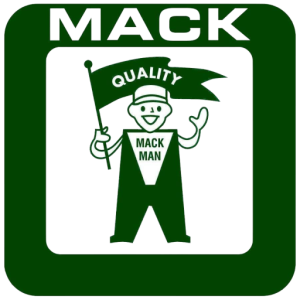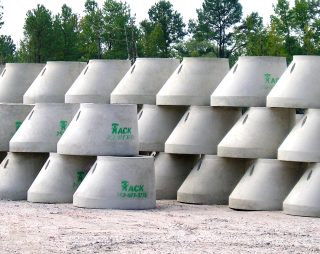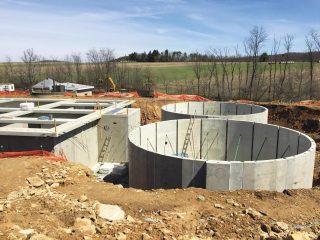Hollowcore precast planking helps builders save time, conserve weight, handle longer spans and higher loads with thinner decks and greater rigidity compared to steel joists or poured in place concrete for both commercial and residential projects. Mack Industries can offer expert consultation for your project based on years of experience creating hollow core concrete planking for buildings of all sizes. The following five benefits are just a preview of the advantages gained with our hollowcore planking.
Save Time
Hollowcore concrete planking allows builders to save time, often the most important factor, especially on large projects where every day makes a difference. Hollowcore precast planking means that it is delivered to the site ready to be used, unlike poured concrete which not only requires time to set, but also can delay projects due to adverse weather conditions.
It is almost impossible to beat the speed of hollowcore construction. A builder can install up to 6,000 square feet of hollowcore per day, depending on the project. After grouting, hollowcore takes just a few days to cure. Hollowcore planks allow a builder to complete a floor per week in a typical multi-story project.
Length and Depth Considerations
An eight-inch hollowcore slab can span 30 feet, whereas a formed and poured in place solid concrete slab would have to be twelve inches thick or more. That reduced thickness and corresponding weight savings is one chief advantage. Compared to a steel bar joist, along its length the hollowcore concrete planking can support 100 lbs. per square foot, whereas a bar joist of similar strength would need to be 16 or 18 inches deep.
Conserve on Envelope Cladding
Related to depth a hollowcore plank system allows builders to conserve height in a multi-story building of up to ten inches per story. With this height reduction, builders can save time and money when cladding the building in its outside “envelope,” and exterior details, or allow for greater headroom on each floor or the ability to meet a community’s height restrictions.
Reduce Maintenance
Another advantage of hollowcore planking is their ability to withstand regular cleaning and harsh chemical environments with less of a negative effect than steel. The high-strength concrete surface of hollowcore makes it a popular choice for wastewater installations for example, carwashes, food plants or animal enclosures. Animal enclosures for instance are regularly pressure-washed to keep them clean, while wastewater plants use harsh chemicals for treatment. Both of these types of environments would corrode or eat away at other material options such as steel, reducing its lifespan and requiring replacement or expensive maintenance.
In addition, a steel frame must be painted and fireproofed where a fire rating is required. Hollowcore planking offers a built-in two-hour fire rating once grouted without requiring the additional step and expense of fireproofing.
Design Support
Many builders rely on us for design assistance. We have an experienced project management and engineering team that is often engaged in a design assist role early in the project. We produce our hollowcore concrete planking in-house at two different plants and have dedicated crews for installation. This provides clients with single source accountability; there is no outside erector with conflicting interests.
Other unique services Mack Industries supplies not common to other hollowcore providers is bottom side patching and drilled weep holes to prevent water from collecting in the cores during construction.
One final note to remember is that hollowcore planking does require a certain amount of space and clearance for delivery and installation.
- Sites require good access for cranes and trucks to move planking into place.
- Heavy cranes require at least a 40×40-foot area to spread outriggers in order to lift and set hollowcore planks to their final position.
- Overhead obstructions such as trees, power lines or roof lines can inhibit the ability of the crane to achieve proper lift height.
Learn more about our hollowcore planking system at a lunch and learn we offer (approved for CEU learning for Architects and Engineers) or contact us for an upcoming project: 800-482-3111.




